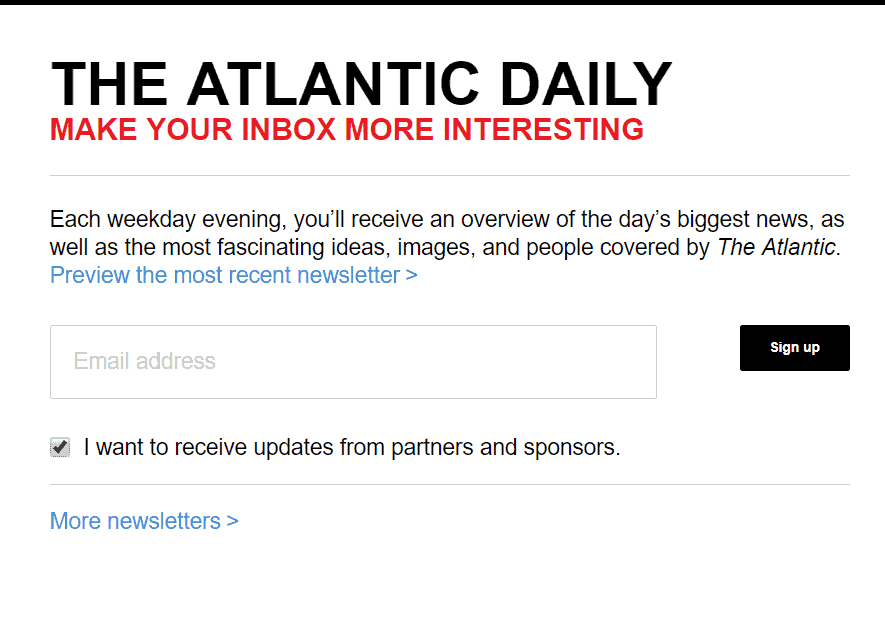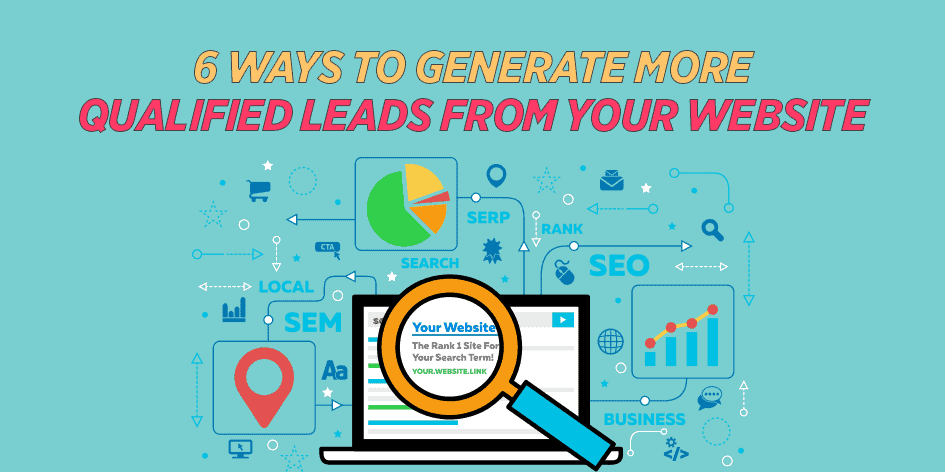If there’s one thing you want your website to be doing for your brand, it’s generating leads.
But as we all know, these days lead generation isn’t about quantity. It’s about quality – you want qualified leads, not a motley collection of email addresses from every person who visits your website.
So how do you optimize your website for qualified lead generation? Here are 6 key steps to take.
Make your site responsive, or mobile-friendly
Mobile searches have become such a huge percentage of Google searches that in 2016, Google announced it was going to experiment with mobile-first indexing. This means that the search engine will use a site’s mobile version as its primary source for the purposes of indexing the site, rather than the desktop version.
What does this mean for you? It means that having a mobile-friendly, or better yet, a responsive website is more important than ever. A responsive website simply means that your site automatically responds to the size screen that you’re using, whether that’s a little smartphone or a huge desktop monitor.
The reason this matters when it comes to lead generation is that people are a lot less likely to stay on your site if it doesn’t show up well on their mobile device. They may have trouble finding your newsletter sign-up button, or just get frustrated when they have to scroll back and forth to see your entire webpage.
One advantage responsive design has over mobile design is that it allows you to have just one version of your website. You won’t need one for desktop and one for mobile devices (designated by an “m.” in your URL).
Since mobile isn’t going anywhere, it makes sense to invest in responsive design now, especially if you’re already thinking of making changes to your website.
Create targeted landing pages
You’ve probably heard the startling, but true, statement that humans now have an average attention span shorter than a goldfish’s (a goldfish can concentrate on a task for 9 seconds, whereas we humans now last about 8 seconds, down from 12 in 2000).
Enter targeted landing pages. If you want to increase your conversion rate, creating targeted, hyper-concise landing pages is an excellent way to do so.
In fact, research by Optimonk shows that conversions increase up to 15% when targeted landing pages are utilized.
So what’s a targeted landing page? It’s usually a popup, but sometimes a full webpage, that appears on a brand’s site when you click on a button in, say, an email or a social ad.
Targeted landing pages should be tied to one, and only one, specific action. Because of this, you’ll want to be able to create individual landing pages based on specific ads or calls to action.
Here’s an example of one from The Atlantic Monthly. When you click on a link in an email advertising their daily newsletter, this is the landing page you end up on:

It’s clean, simple, and it gets right to the point. You’re not signing up for lots of newsletters – you’re signing up for one. You’re not filling in a long form with your name, email, and interests – you’re just giving them your email address. And customers are a lot more likely to fill out a form if it’s quick and easy.
Use a free lead generation tool
Small businesses – and large ones, for that matter – have more online tools at their disposal now than ever before, and many are free.
Lead generation tools like Hubspot Marketing Free and Sumo can help you capture more emails through landing page creation, easy email sign-up pop-ups, and more. Hubspot Marketing Free will also pull in publicly available information on every lead who signs up for your email list.
There’s really no reason NOT to be using a free tool like this since they require no budget and no risk.
Do an SEO audit of your site
This is definitely one of the more time-consuming ways you can get more qualified leads, but it’s also an important step in making your website as effective as possible.
An SEO audit means going through each page of your site and optimizing it so that it’s easily searchable and more likely to show up near the top of search engine rankings. You’ll want a wide range of keywords, and a mix of high-ranking and mid-ranking ones, to get the best results.
Because SEO audits can be complex, this is one of those tasks that is usually best delegated to an agency – unless you have an SEO whiz on your staff. But if you just want to do some casual SEO, Google’s Keyword Planner tool can be very helpful.
Use a mix of gated and ungated content
Strategically using gated content, or content that visitors have to pay for in the form of an email address can be a great way to up your qualified lead numbers.
Strike the right balance between gated and ungated content so you increase your qualified leads without driving people away from your site. Share on XThis is because leads who probably won’t visit your site a second time will be a lot less likely to give you their email addresses than those who are actually interested in what you have to offer.
Of course, you’ve got to strike the right balance between gated and ungated (or totally free) content. Too much gated content will decrease all your leads, qualified and unqualified. Too little will result in large numbers of leads, but lower percentages of qualified ones.
Incorporate client testimonials, with pictures if possible
Client testimonials can be highly effective in earning the trust of your site visitors, making it more likely that they’ll convert.
Choose testimonials that offer some detail, as those are the ones that will be the most convincing. You don’t want visitors wondering whether those generic positive testimonials are actually real.
Adding photos or, better yet, videos of the people whose words you’re using – with their permission – will up the trust factor even more. You don’t need fancy headshots – a simple profile picture will do. The goal here is simply to make readers feel confident that there are actual people behind those happy reviews.
Adding photos or videos to your testimonials page can earn visitors’ trust, increasing conversions. #digitalmarketing Share on XBizzabo, an event marketing company, incorporates testimonials in a variety of formats, from tweets (see below) to quotes to video.
Want more on increasing your qualified leads and conversions? Read “50 Pro Tips for Boosting Your Brand Reach and Converting More Customers.”









